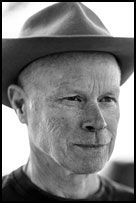Back, and Forth: Author reflects on four decades in the vineyard


“I’m optimistic about Brand Oregon,” said Allen Holstein, 43-year veteran of vineyard management and winemaking in Dundee.
He spoke recently at Linfield University’s Nicholson Library, drawing extensively on his 116-page memoir about the Yamhill County wine industry, “Grape Whisperers,” which was published in 2022.
I’d checked out the book last spring at Nicholson, and did so again to prepare for his talk, forgetting until weeks later to return it. That resulted in the first library fine since I was a student at Linfield in 1980 — about the time Holstein came west and settled among the young vines of Yamhill County.
“There is a lot of opportunity in the future for an industry I am glad to have witnessed and participated in,” said Holstein, who came to know well the pioneers of the local wine-making industry.
As he points out in his book, “The eruption of Mount St. Helens in 1980 covered the region in ash,” and “the phylloxera insect infestation … threatened to wipe us out in 1990.” He also cites such challenges as summer heat waves, winter freezes, warming brought on by climate change and periodic smoke damage from wildfires.
“We are also highly dependent on seasonal laborers from Mexico,” he said. “So our fate is closely connected to the swirling debates about immigration.”
Holstein (pronounced hall-steen) described his early winery role as “a hired gun.”
He was a one-time college roommate of Ken Wright of Ken Wright Cellars, and visited Wright at University of California/Davis before heading to Oregon. After enrolling at Oregon State University, he landed his first job in the industry, as a foreman at Knudsen Vineyards near Dundee.
“Everyone was learning,” he said, so the attitude was collaborative.
“Poor wine getting out hurts everyone,” he said. “We knew that. It had to be high quality.
“The strength was, we planted hillsides. Had that not happened, early wines out of Oregon would not have the quality it did.”
Thankfully, he said, “The Oregon climate was different. How different, no one knew at the time.”
Vintners 35-40 years ago were adjusting to that, while also learning about yield prediction and management. For a time, he said, Oregon had “a reputation for inconsistency,” and not just in quality, but also in volume.
“No one had any idea in the 1970s and 1980s what was the way to estimate,” Holstein said. “We were flying blind in that whole period.”
He said the cogent lesson was, “Wine yields had to fit the sales channel,” for the sake of stable pricing, supply and sales.
In the 1990s, new partnerships via foreign investment and development of professional connections in France and Australia led to “a new maturation of the industry, and sparkling wines arrived,” he said. “All these people were swirling around, owners and investors and talented people who were looking around for how to get involved.”
Introduction of French Dijon clones in Oregon in 1989 helped save the California wine industry and shape it in Oregon. California needed the plants, and over the next few years, Oregon could provide them.
Holstein said he saw truckloads of clones heading south. “The fact that they came through Oregon at the time they did really influenced west coast viticulture,” he said.
In the 1990s came new investment and the founding of numerous wineries now considered mainstays. The region went on to experience maturation of the vines, expansion of the market and greater emphasis on wine education in the early 2000s.
This, according to Holstein, was joined by the advent of personal technology, permitting of direct sales, the rise of winery tourism, and the arrival of the Allison Hotel in Newberg. “All of a sudden it’s a destination,” he said.
Looking forward, Holstein is a blend of bullish and skeptical.
“Water is not so much an issue, and there is plenty of land,” he said. “The shortage is in the supply of labor and customers,” he said.
He said the Coast Range along the mid- and northern-Willamette Valley has the same soils as lower areas now extensively planted with grapes.
“Thirty years ago,” he said, “we never dreamed of planting vines west of Carlton.” But it’s done extensively now.
Vintners and investors must say to themselves, “I have risk with climate change, so how do I diversify my risk?” he said.
“There is a delta in land prices between here and the rest of the world. So they are coming.”
Asked, “Can we really create a market for all these new, undistinguished brands?” Holstein said, “If you can grow grapes, make wine and sell wine, you have a business.
“Do two of those things, and you likely still will. Do one of those things and that means you’re a hobbyist.”
He said, “There are a lot of dreamers. There will be a period of shakeout of the landscape.” But he said, “If you can sell it 100 percent direct to consumer, you hang in for a while.”
Contact Kirby Neumann-Rea at kirby@newsregister.com or 503-687-1291.









Comments